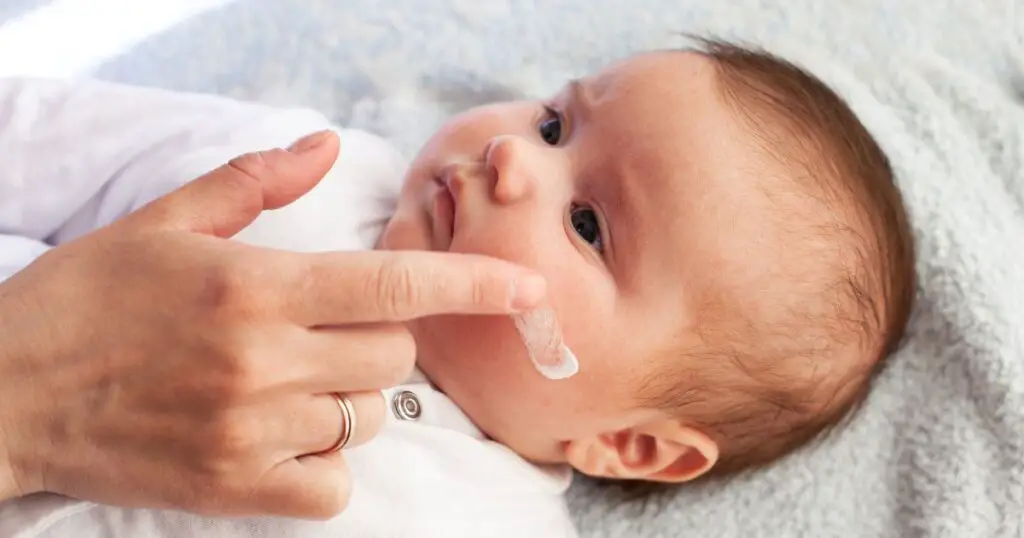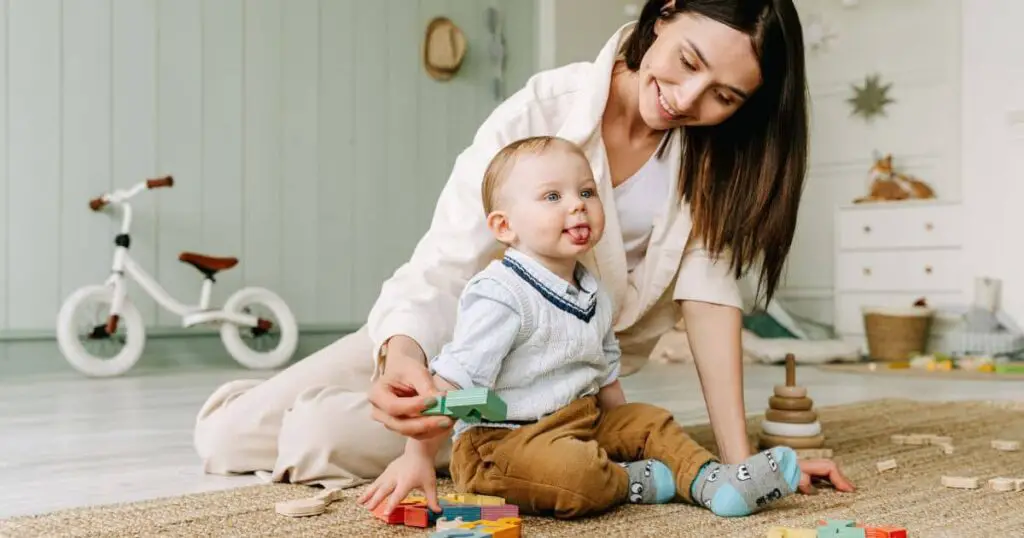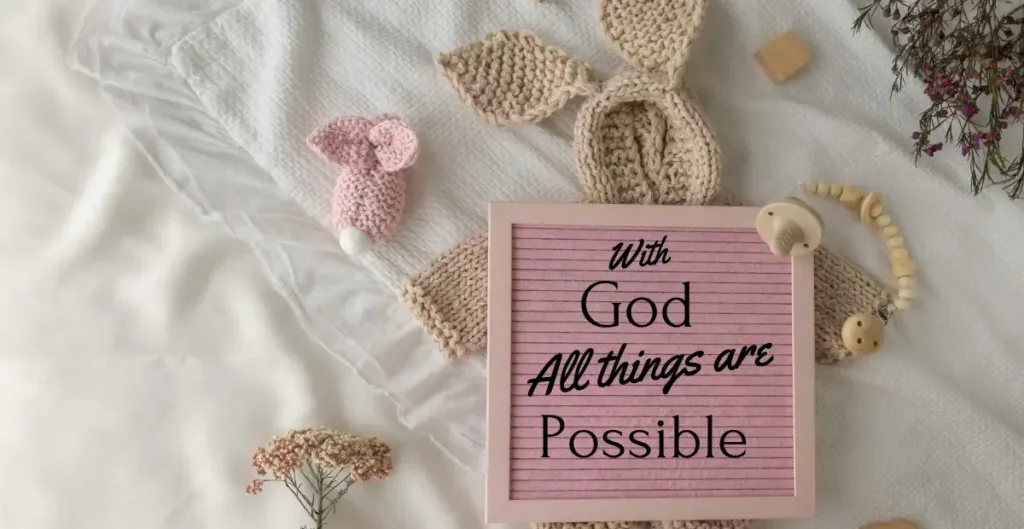The first year of your baby’s life has flown by in the blink of an eye. From those first moments cuddling your newborn to watching him sit up, crawl, and begin to cruise, you have witnessed his incredible growth and development. Your baby boy is becoming quite independent now, with strong opinions and a mischievous sense of humor emerging. The coming year will bring even more changes and milestones as his skills, personality, and independence blossom.
Understanding Your One-Year-Old Baby Boy’s Development
Physical development:
At 12 months, most baby boys can pull themselves up to stand, cruise, and hold onto furniture; some may even take their first tentative steps. Expect your little one’s walking skills to explode over the next few months. Provide plenty of opportunities for your baby to practice walking, but keep safety in mind and clear paths of any obstacles. For more information on physical development, visit the Centers for Disease Control and Prevention (CDC).
Cognitive development:
Your one-year-old baby boy’s understanding of language is increasing rapidly. Expect his receptive language skills (what he understands) to far outpace his expressive language skills (what he can say) for several months. Puzzle toys, shape sorters, and stackable blocks all help encourage cognitive and problem-solving development. Read lots of books together and describe what’s happening in the pictures.
Emotional development:
Around his first birthday, your little boy may experience separation anxiety—crying when you leave, even for short periods. This is a normal developmental stage and a sign that he recognizes you as a familiar and trusted figure. Provide reassuring cuddles and patience; the phase will pass. Your baby boy is also becoming more independent, wanting to do things “by myself!” Give him opportunities to explore the world on his terms but keep safety and supervision in mind.
Social development:
Your one-year-old baby boy will enjoy simple pretend play, imitation, and games that involve interaction with others, like peek-a-boo. Arrange playdates with other toddlers to help encourage the development of social skills like sharing, cooperation, empathy and friendships. Of course, closely supervise playdates at this age and be ready to intervene if frustration arises. Your toddler will interact much more with the world around him, so introduce him to new environments and social situations.
Health and Nutrition for Your One-Year-Old Baby Boy
Around his first birthday, you can introduce whole cow’s milk and water in a sippy cup. Most baby boys at this age can drink from sippy cups independently. Offer 3 meals and 2-3 snacks daily with various nutritious foods. For more information on nutrition for toddlers, Visit the American Academy of Pediatrics (AAP).
Some suggestions include the following:
- Finger foods: Teething biscuits, cheese cubes, banana pieces, avocado chunks, cooked pasta, small pieces of bread, etc. These help develop fine motor skills and self-feeding.
- Protein sources: Diced meat, fish, beans, lentils, eggs, etc. Aim for 2-3 ounces 2-3 times per day.
- Fruits: Applesauce, mashed berries, peach slices, melons, etc. Offer fruit with every meal and snack.
- Vegetables: Green beans, carrots, broccoli, spinach, potatoes, zucchini, etc. Mash or dice as needed for your little one to handle.
- Grains: Oatmeal, rice, quinoa, mashed potatoes, teething biscuits, pasta, etc. Offer grains with most meals.
- Dairy: Yogurt, cheese, cottage cheese. Aim for 2-3 servings per day to meet calcium needs.
- Iron-rich foods: Red meat, beans, lentils, fortified cereal. Important for growth and development.
- Water: In a sippy cup, offer water with every meal and snack. This will help your little one stay hydrated and get used to drinking from a cup.
At his 12-month check-up, your baby boy will receive vaccinations including MMR, chickenpox, and Hep A. Schedule regular dentist appointments every 3-6 months to help establish a good oral hygiene routine and make visits positive experiences. Brush tiny teeth twice a day with a baby toothbrush and fluoride toothpaste.
Sleep Patterns and Schedules
Most one-year-old baby boys transition from two naps to one nap a day around this age, typically in the early afternoon. Put your little one down for a nap when you notice signs of tiredness like rubbing eyes, fussiness or loss of interest in playing. For more information on sleep patterns for toddlers, visit National Sleep Foundation.
For nighttime sleep, aim for 11 to 13 hours. Establish a relaxing bedtime routine to help your toddler wind down, such as a bath followed by a story or lullaby. Be consistent and patient through nighttime wakings, keeping stimulation low and avoiding turning on bright lights.
To help your baby sleep well, provide the following:
- A comfortable sleep environment: Mattress fitted sheet, wearable blanket or sleep sack, white noise, etc.
- A consistent and calming bedtime routine: Bath, book, lullaby, etc., simultaneously each night.
- Developmentally appropriate expectations: Some night wakings are normal; patience and consistency are key. Don’t stimulate or turn on bright lights during night wakings.
- A consistent nap schedule: Watch for signs of tiredness like rubbing eyes or fussiness and put your little one down roughly the same times each day.
- Safety: Placed on his back in a bare crib. No loose bedding, blankets, toys or bumpers.
- Parental presence: Gently soothe your little one to sleep. Stay with him until he’s drowsy or falls asleep. It will help avoid separation anxiety and allow you both to get the rest you need.
- Daytime stimulation: Lots of activity, social interaction, and time outdoors during the day will help your little one sleep better at night.
Safety Measures for Your One-Year-Old Baby Boy
Toddlers this age are naturally curious about the world and keen to explore but have little sense of danger. Take the time to thoroughly babyproof your home by locking up cleaning supplies and installing corner cushions, safety gates, outlet covers and cabinet locks. Never leave a toddler unsupervised, especially when eating hot dogs, grapes or anything else that could be a choking hazard. For more information, visit Consumer Product Safety Commission (CPSC).
Keep a hand on your little one while walking up and down stairs. Watch your toddler closely while playing outside; never leave them unsupervised in the yard or around water. Ensure all small pieces, like LEGOs, magnets, loose coins, etc., are kept out of reach to prevent choking or swallowing. The most important safety measure is constant supervision and an awareness of your toddler’s abilities and limitations. Their safety is in your hands.
Fostering Independence in Your One-Year-Old Baby Boy
Toddlers this age crave independence but still need you close by. Encourage your little one’s independence by:
- Letting him feed himself with finger foods while you offer help and supervision.
- Providing opportunities for self-directed play. Set up engaging activities and toys, then let your toddler explore on his terms.
- Allowing simple choices whenever you can. Offer two options, like asking if he’d like the red or blue shirt. This gives him some control over the situation.
- Giving your toddler household tasks, he can help with, like putting toys in a bin or laundry in the hamper. Provide lots of praise for his efforts.
- Allowing extra time so he can do things himself, like washing his hands, brushing his teeth, getting dressed, etc. Offer help and supervision, but give him opportunities to work on skills.
- Being patient through tantrums. Toddlers this age experience frequent frustration over their lack of control and limited communication skills. Stay calm and reassuring until the storm passes.
- Encouraging your toddler to do as much as possible during diaper changes, like lying down when asked or helping remove clothes. Provide praise and assistance as needed. Potty training may start between 18 months and 2 years for some boys. Look for signs your toddler is ready before beginning.
Engaging Your One-Year-Old Baby Boy in Learning and Play
Play is essential for the development and learning of toddlers. Engage your little one in activities that encourage:
- Exploration: Shape sorters, stacking toys, activity tables, play kitchen sets, light-up or musical toys, etc.
- Problem-solving: Puzzles, nesting toys, stacking rings, cylinder blocks, etc. These types of play develop cognitive skills.
- Imagination: Dolls, toy food, play kitchen sets, dress-up clothes, play cars, play telephones, etc. Join in pretend play with your toddler.
- Motor skills: Balls, activity tables, bikes and tricycles with handlebars to hold onto, shape sorters, stackable blocks, etc.
- Language: Board books with lots of pictures, play food (have your toddler name the items), play kitchen sets (have your toddler name utensils and foods), etc. Read books together and name pictures you point at.
- Social interaction: Blocks, shape sorters, play food, toy phones, play centers with multiple chairs, play kitchen sets, etc. Arrange playdates with other toddlers to help build social skills.
More Activities:
- Closely supervise playdates at this age and be ready to intervene if frustration arises. Play interactive games like rolling a ball back and forth, playing peek-a-boo, and making silly faces or sounds together. Laugh, smile and engage with your toddler during play. Your enthusiasm and joy in interacting with him will help build his confidence and desire to connect with others.
- Provide a safe space for your toddler to freely explore the world around him. Toddler-proof the area by locking up anything dangerous and ensuring secure exits. Take time to get down on the floor and discover the world with your little one. Your presence and willingness to join in your toddler’s discoveries will boost his confidence and security in exploring independently. Stay close by for supervision, but give your toddler opportunities to follow his interests on his terms as much as possible.
- Set clear and consistent limits to help guide your toddler’s behavior and keep him safe. Distract and redirect your little one when needed by offering an appropriate alternative activity to redirect his attention and energy. Toddlers this age have little impulse control but are eager to please their parents and caregivers. With patience, love and consistency, you’re well on your way to raising a happy, healthy little boy. The coming year will continue to bring more discoveries, changes and milestones at a whirlwind pace, so buckle up and enjoy this exciting stage of development!
FAQ:
What are the key developmental milestones for a one-year-old baby boy?
Key milestones for 1-year-old baby boys include: walking steadily or taking first steps, understanding simple words and commands, using simple gestures like shaking head for “no” or waving “bye,” exploring the world through senses, imitating parents and caregivers, showing affection, and engaging in pretend play.
How should I adjust my one-year-old baby boy’s diet as he transitions from breastmilk/formula to solid foods?
Offer 3 meals and 2-3 snacks of nutritious finger foods, protein sources like meat/fish/beans, fruits/veggies, whole milk/dairy and grains. Provide sippy cups for water with meals and allow self-feeding as much as possible. Avoid choking hazards. Keep offering breastmilk or formula until age 1, then switch to whole milk in a sippy cup.
How can I ensure my one-year-old baby boy is getting enough sleep?
Most 1-year-olds need 12-14 hours of sleep in 24 hours, including 1 longer nap and 11-13 hours at night. Have a consistent and relaxing bedtime routine, and avoid screens/stimulation before bed. Keep the sleep environment safe and comfortable. Be patient through night wakings and avoid stimulation if he does wake up. Naps and nighttime should be at roughly the same time every day.
What safety measures should I take for my one-year-old baby boy?
Babyproof your home by locking up cleaning supplies and installing corner cushions, safety gates, outlet covers and cabinet locks. Never leave a toddler unsupervised, especially when eating. Watch your toddler closely while playing outside; never leave them unsupervised in the yard or around water. Ensure all small pieces, like magnets, loose coins, etc., are out of reach. Constant supervision and awareness of
abilities/limitations.
How can I foster independence in my one-year-old baby boy?
Let him feed himself with finger foods while offering help. Provide opportunities for self-directed play. Allow simple choices like asking if he wants the red or blue shirt. Give household tasks he can help with, like putting toys in a bin. Allow extra time so he can do things himself, like brushing his teeth or getting dressed. Offer help as needed. Be patient through tantrums. Encourage participation in diaper changes.
What types of toys and games are suitable for a one-year-old baby boy?
Blocks, shape sorters, nesting toys, play food, play kitchen sets, dolls, board books, activity tables, bikes/trikes. Balls, puzzles (2-3 pieces), play centers, light-up/musical toys. Toys that encourage exploration, problem-solving and imagination.
How can I encourage my one-year-old baby boy’s curiosity and exploration?
Provide a safe space for free play. Get down on the floor and explore the world with him. Give opportunities for self-directed play with engaging toys/activities, then follow his lead. Stay close to supervise but allow independence. Ask questions about what he’s doing or noticing. Explore outside together in the backyard or park. Read books together and describe pictures. Model your curiosity about the world. Praise efforts at exploring and discovering.

I’m Mithun Debnath, a dedicated dad and the founder of Papa Parenting. I’m here to share my parenting journey, tips, and insights to make your life as a parent a little easier. Join me as we navigate the adventures of fatherhood together.






